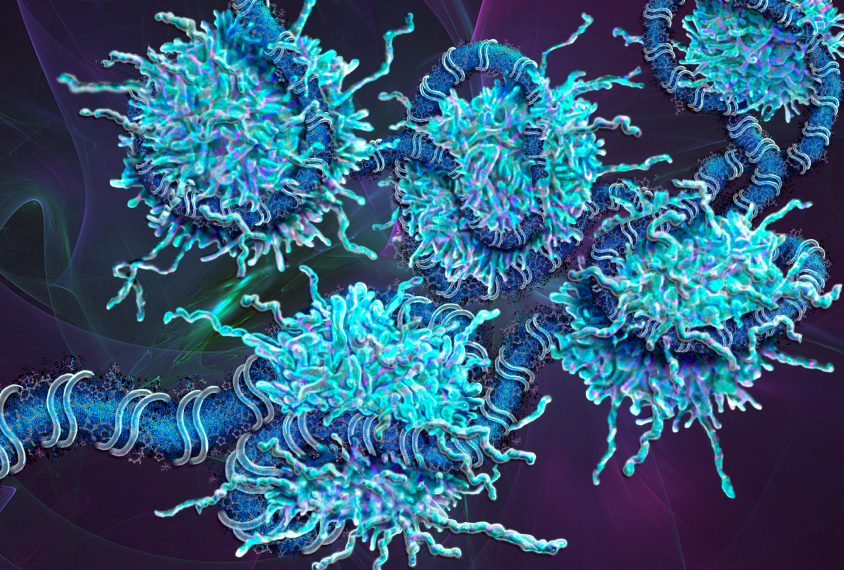A new spin on the classic CRISPR gene-editing tool can alter the genome’s chemical tags and suppress gene expression for months. Researchers could use the approach to adjust the activity of genes tied to autism.
CRISPR systems typically use an enzyme called Cas9 to cut target DNA sequences and remove or replace them. Using CRISPR to edit genes has its risks, however: The tool can generate unwanted, permanent changes to DNA and lead to cell death.
Instead of manipulating DNA directly, researchers can turn genes on or off by altering the epigenome, a set of chemical modifications in the genome that control expression. But this approach typically requires cells to express a foreign protein for as long as researchers want to suppress or enhance a gene’s expression, which runs the risk of triggering an immune reaction.
With the new approach, researchers can durably alter gene expression after only briefly exposing cells to an epigenetic editor called CRISPRoff. The technique, described in April in Cell, lowers the amount of time cells are exposed to foreign proteins. To reverse the changes, the team built another tool, called CRISPRon, that removes methyl groups from DNA at specific sites.
“We can do the same things as CRISPR in that we can permanently shut off genes, but we can do this without needing to make mutations to the genome,” says Luke Gilbert, assistant professor of urology at the University of California, San Francisco, who co-led the work.
Gilbert and his colleagues created CRISPRoff using an inactivated version of the Cas9 protein, which no longer snips DNA but can still be guided to a target site by way of RNA strands. They then fused Cas9 to two different classes of proteins: One modifies marks on proteins called histones, around which DNA winds, and the other adds chemical tags known as methyl groups to DNA. Both changes silence gene expression.
To test the system, the team delivered the protein complex along with RNA segments targeting various genes into cultured human cells. In one experiment, they targeted a few select genes, measured gene expression levels and logged DNA methylation patterns to look for any unintended ‘off-target’ effects. In another experiment, the team used CRISPRoff to silence genes in stem cells and then grew them into neurons.
Steady silencing:
CRISPRoff silenced the expression of targeted genes in the vast majority of cells for at least 50 days, even though the protein complex itself disappeared after 10 days, the researchers reported. In some batches of cells, the targeted gene remained silent for 450 cell divisions, or 15 months. And stem cells maintained the changes to gene expression as the cells differentiated into neurons.
The tool is highly specific, the researchers also reported. CRISPRoff tamped down the activity of targeted genes without significantly altering the expression levels of neighboring genes. Using CRISPRon, the researchers could reactivate expression in more than 70 percent of cells.
The team further gauged CRISPRoff’s ability to silence an array of genes. They introduced RNA segments targeting more than 20,000 genes into a pool of cells, with each cell carrying a pair of RNAs that target the same gene. Because the RNAs are converted into DNA and integrate into a cell’s genome, the researchers let the cells grow and sequenced their DNA to gauge the abundance of specific sets of RNAs.
RNAs that target genes known to be essential for cell proliferation had been depleted, demonstrating that CRISPRoff had been effective. The result suggests that CRISPRoff can silence the majority of genes in the genome, the researchers say.
The team was also able to silence genes that lack regions known as CpG islands — previously thought to be critical for regulating genes through methylation. The findings suggest that these genes are just as controllable as genes with CpG islands, however, Gilbert says.
Researchers could use CRISPRoff and CRISPRon to explore how the epigenome affects gene activity and the role it plays in conditions such as autism, the researchers say. Ultimately, the tools could be used to develop therapies that regulate gene expression.






